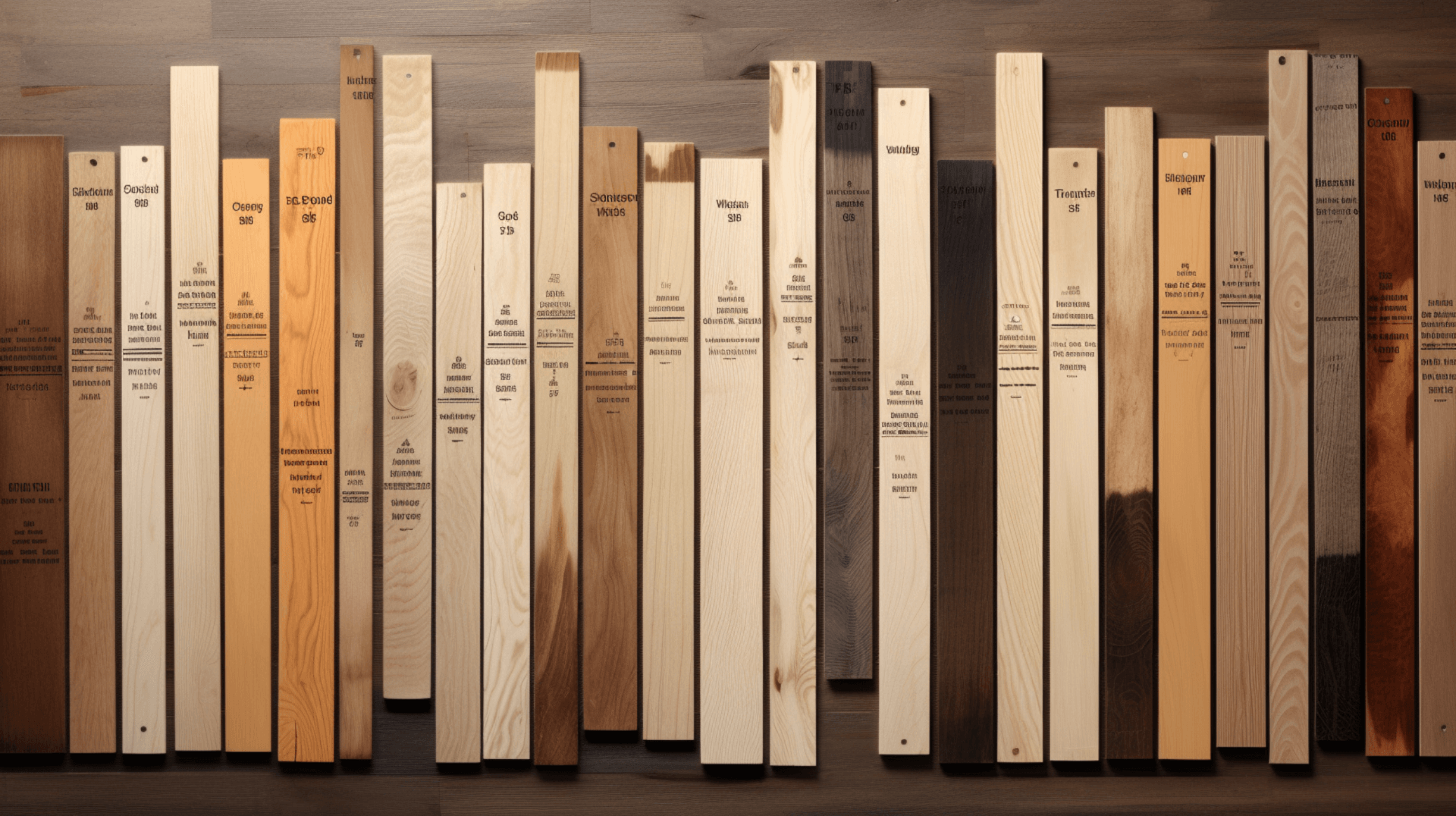Introduction: Understanding the Importance of Professional Wood Floor Sanding and Refinishing
Professional wood floor sanding and refinishing is a process that involves the removal of the top layer of the wood floor to reveal the underlying wood. This process is necessary to remove any scratches, dents, or other damage that may have occurred over time. Once the underlying wood is exposed, the floor is then sanded to create a smooth, even surface. The sanding process also removes any old finishes, such as wax or polyurethane, that may have been applied to the floor. After the sanding process is complete, a new finish is applied to the floor to protect it from further damage and enhance its aesthetic appeal.
Professional wood floor sanding and refinishing is necessary to maintain the longevity and beauty of your wood floor. Over time, dirt, dust, and other debris can accumulate on the surface of the floor, causing scratches and dents. Additionally, the finish on the floor can become dull and worn, making it look old and dated. Professional sanding and refinishing can help to restore the original beauty of the floor and protect it from further damage.
Professional sanding and refinishing can also enhance the longevity of your wood floor. The sanding process removes any old finishes that may have been applied to the floor, allowing for a fresh start. The new finish that is applied after sanding acts as a protective layer, preventing scratches, stains, and other damage from occurring. It also enhances the natural beauty of the wood, bringing out its color and grain pattern.
Overall, professional wood floor sanding and refinishing is necessary to rejuvenate and protect your wood floor. It removes imperfections, restores the original beauty, and enhances the longevity of the floor, ensuring that it remains a stunning and durable feature in your home or business.
Identifying Your Type of Wood Floor
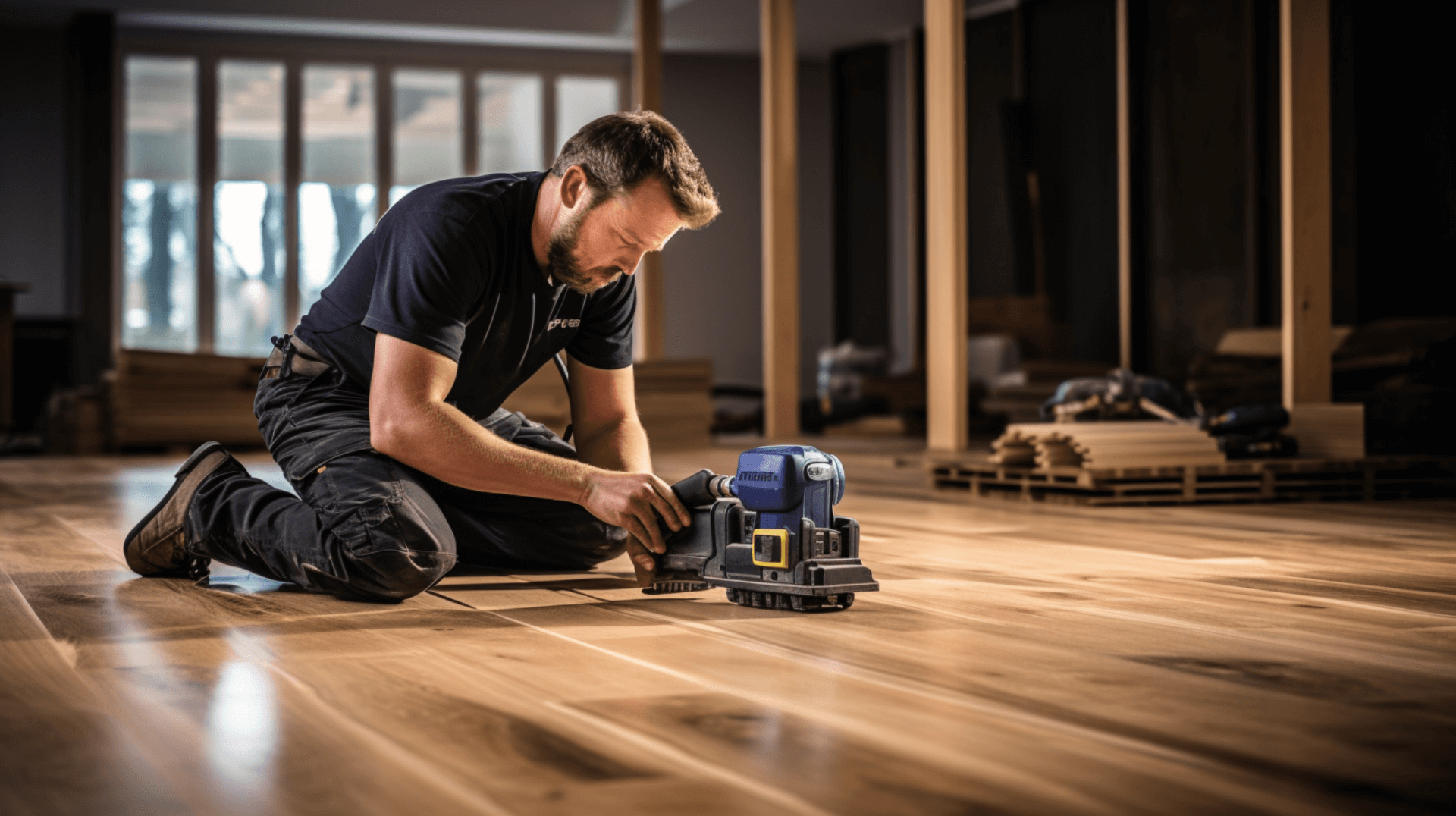
Identifying the type of wood floor you have is important before sanding and refinishing. This is because each type of wood flooring requires different sanding and refinishing techniques. For example, solid hardwood floors require a more intensive sanding process than engineered hardwood or laminate floors. Additionally, the type of finish used on the floor will depend on the type of wood flooring.
To identify the type of wood floor you have, you can look at the construction of the floor. Solid hardwood floors are typically made from a single piece of wood, while engineered hardwood floors are made from multiple layers of wood. Laminate floors are made from a composite material and have a plastic-like finish. You can also look at the edges of the flooring. Solid hardwood will have a tongue-and-groove edge, while engineered hardwood and laminate will have a square edge.
Another factor to consider is the insulation underneath the floor. Solid hardwood floors require insulation to be fitted between the floor joists, while engineered hardwood and laminate floors do not. Additionally, if the floor is above an unheated cellar or basement, you will need to fit the insulation tightly between the joists and secure it in place with netting if required. Plasterboard should then be fixed to the ceiling of the basement to provide fire resistance. It is a good idea to get advice from a Building Control Officer at your local authority to ensure compliance with building regulations.
By accurately identifying the type of wood floor you have, you can ensure that you use the appropriate sanding and refinishing techniques and products. This will help you achieve the best results and maintain the longevity of your floor.
The Lifespan of Different Types of Wood Floors
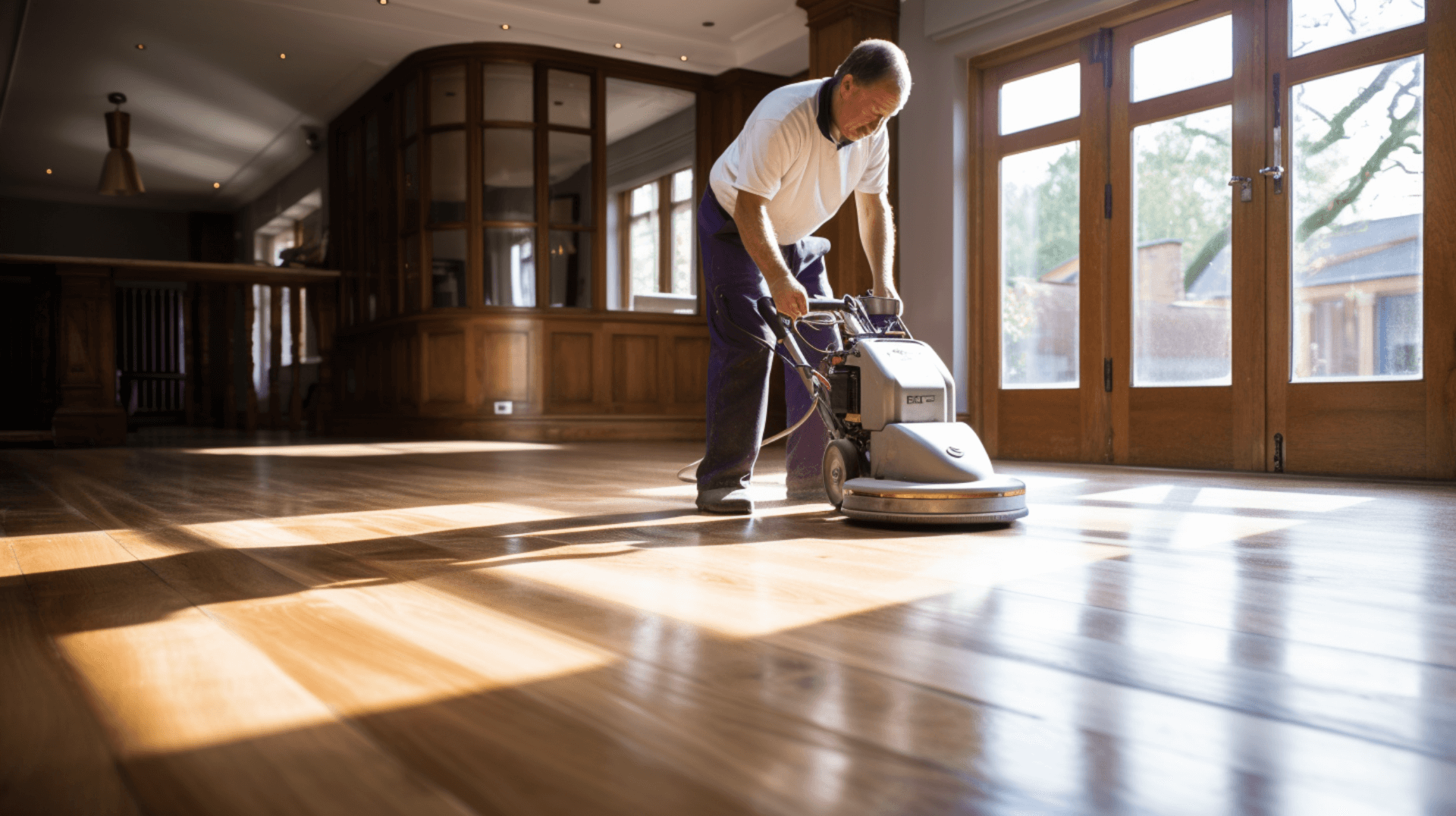
The average lifespan of hardwood, softwood, and engineered wood flooring depends on the type of wood, the quality of the installation, and the level of maintenance. Hardwood floors are generally the most durable and can last up to 100 years with proper care and maintenance. Softwood floors are less durable and typically last between 10-20 years. Engineered wood floors are made from multiple layers of wood and can last up to 30 years.
The type of wood floor affects its durability and need for refinishing. Hardwood floors are the most durable and require the least amount of refinishing. Softwood floors are less durable and require more frequent refinishing. Engineered wood floors are also less durable and require more frequent refinishing.
Regular maintenance is essential to extend the lifespan of your wood floor. This includes vacuuming and damp-mopping the floor to remove dirt and debris, using the correct floor finish, and implementing preventative measures, such as using furniture protectors or felt pads on furniture legs. Additionally, it is important to leave room for expansion around the edges of each room, seal the gaps between the floorboards and along the skirting, and fit insulation tightly between the floor joists. Any timber to be used as a new floor covering should also be left in the room for some weeks with the heating on before being laid to prevent it from warping.
By properly maintaining your wood floor and addressing any issues promptly, you can maximize its lifespan and enjoy its beauty for many years to come.
Determining the Condition of Your Wood Floor
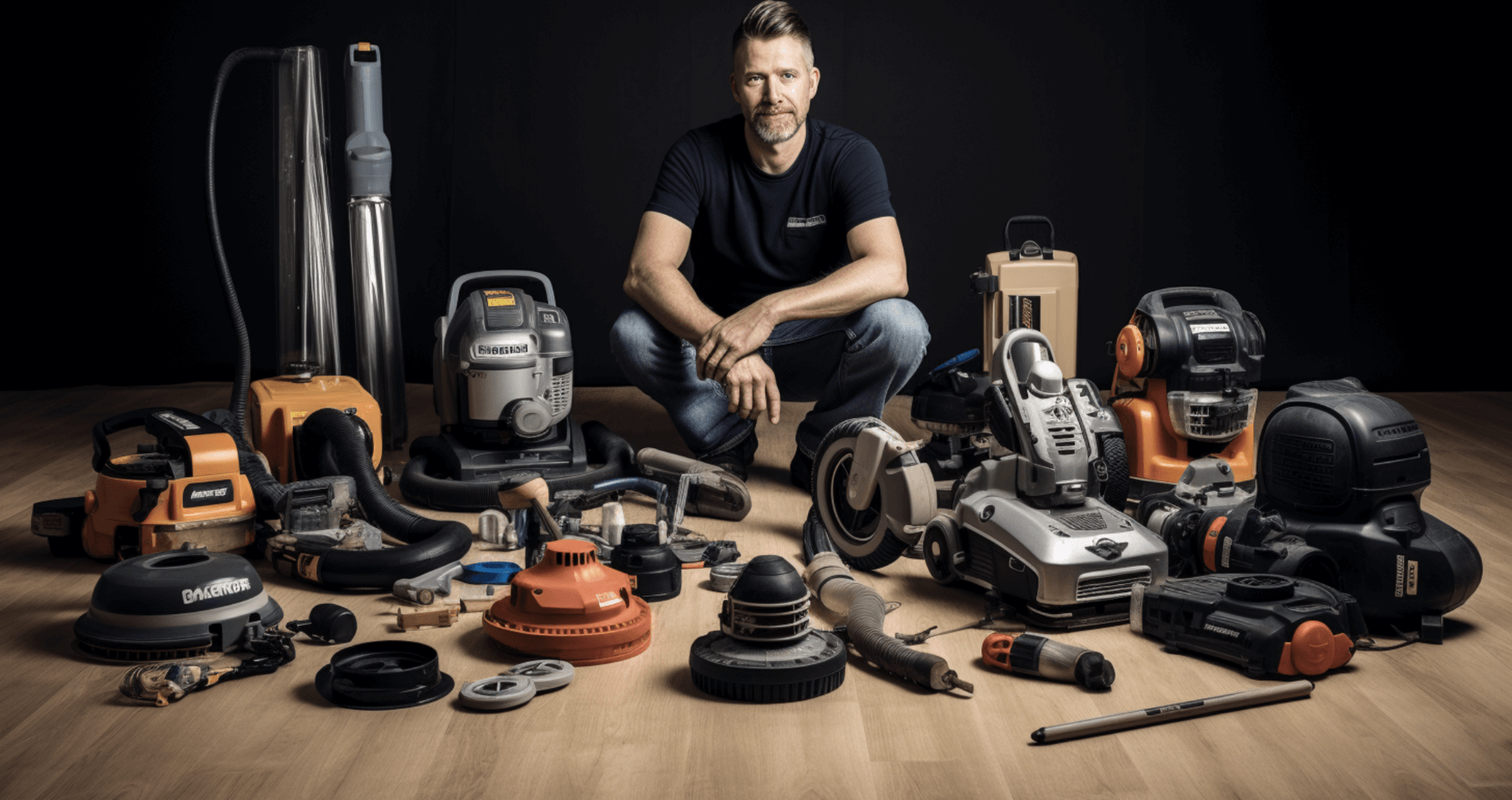
Inspecting the floor for signs of damage, such as scratches, dents, discoloration, loose boards, gaps, and water damage, is crucial in evaluating the condition of your wood floor. These signs indicate wear and tear, potential structural issues, and the need for sanding and refinishing.
By identifying these issues, you can plan the appropriate repairs and refinishing techniques to restore your floor effectively. Addressing underlying problems and properly preparing the floor before sanding and refinishing will result in a smoother and longer-lasting finish.
Regular cleaning and maintenance are essential to prevent dirt and debris accumulation, which can cause damage to the floor. Leaving room for expansion, sealing gaps, and fitting insulation tightly are also important preventive measures to maintain the floor’s condition.
Considering the type of wood floor is also crucial in assessing its condition. Different types require different sanding and refinishing techniques. Solid hardwood floors, for example, require more intensive sanding compared to engineered hardwood or laminate floors. The type of finish used will also depend on the specific wood flooring.
Overall, evaluating the condition of your wood floor before deciding on sanding and refinishing is important to determine the necessary repairs, achieve optimal results, and avoid unnecessary costs and efforts.
Frequency of Sanding and Refinishing for Different Types of Wood Floors
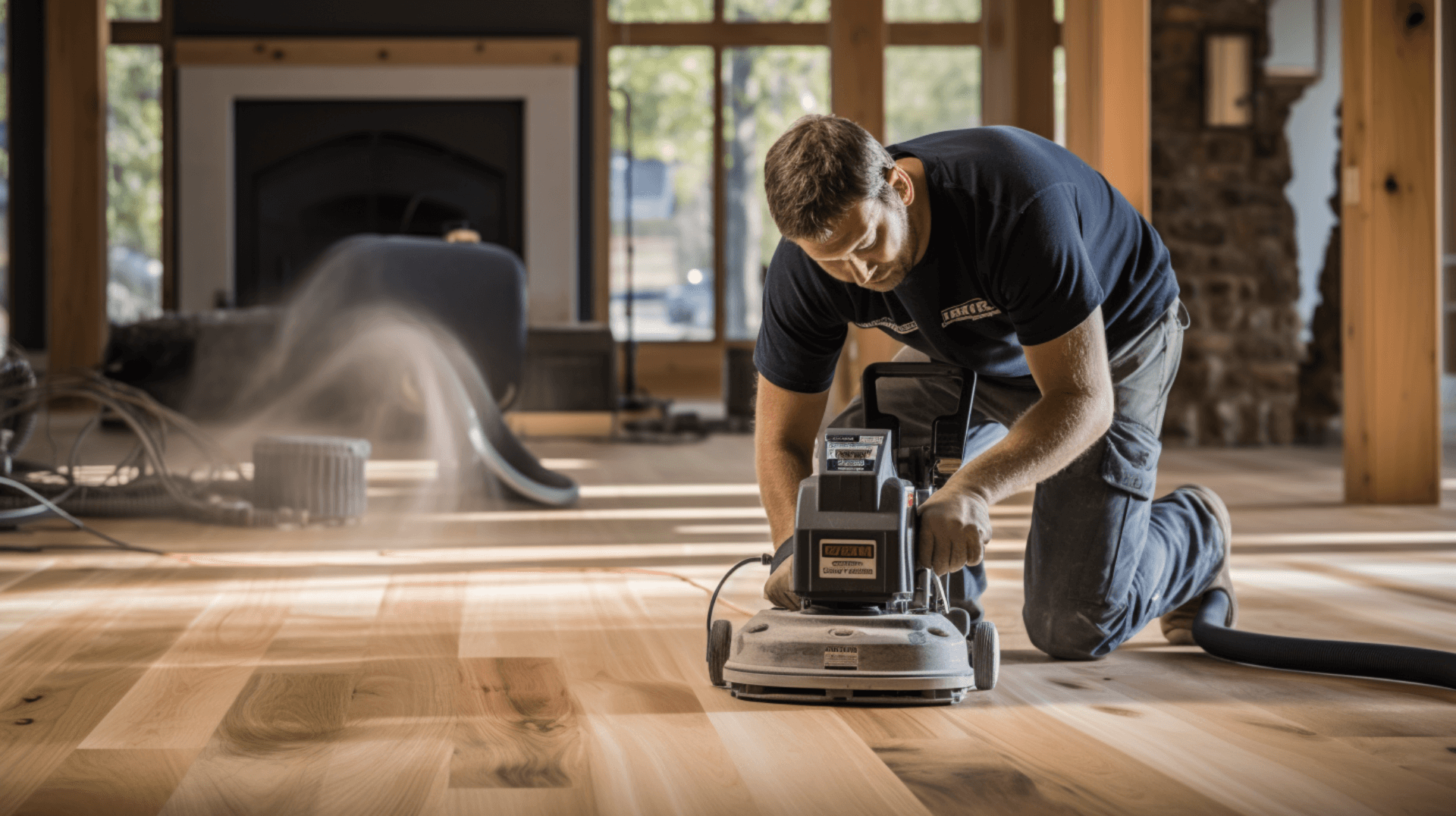
The frequency of sanding and refinishing for different types of wood floors depends on various factors, including the type of wood, the level of foot traffic, and the type of finish used.
Hardwood floors, being the most durable, typically require sanding and refinishing every 10-20 years. Softwood floors, being less durable, may need sanding and refinishing every 5-10 years. Engineered wood floors, also less durable, may require sanding and refinishing every 5-7 years.
High foot traffic areas may require more frequent sanding and refinishing, while low foot traffic areas may need less frequent maintenance. The type of finish used can also influence the frequency, as some finishes may require more frequent maintenance than others.
Regular cleaning and maintenance play a crucial role in extending the time between sanding and refinishing. By preventing dirt and debris accumulation, homeowners and business owners can reduce the need for frequent sanding and refinishing.
Overall, it is important to consider the specific type of wood floor, the level of foot traffic, and the type of finish used when determining the frequency of sanding and refinishing. Following the recommended maintenance schedule will help maintain the longevity and appearance of the wood floor.
The Process of Professional Wood Floor Sanding and Refinishing
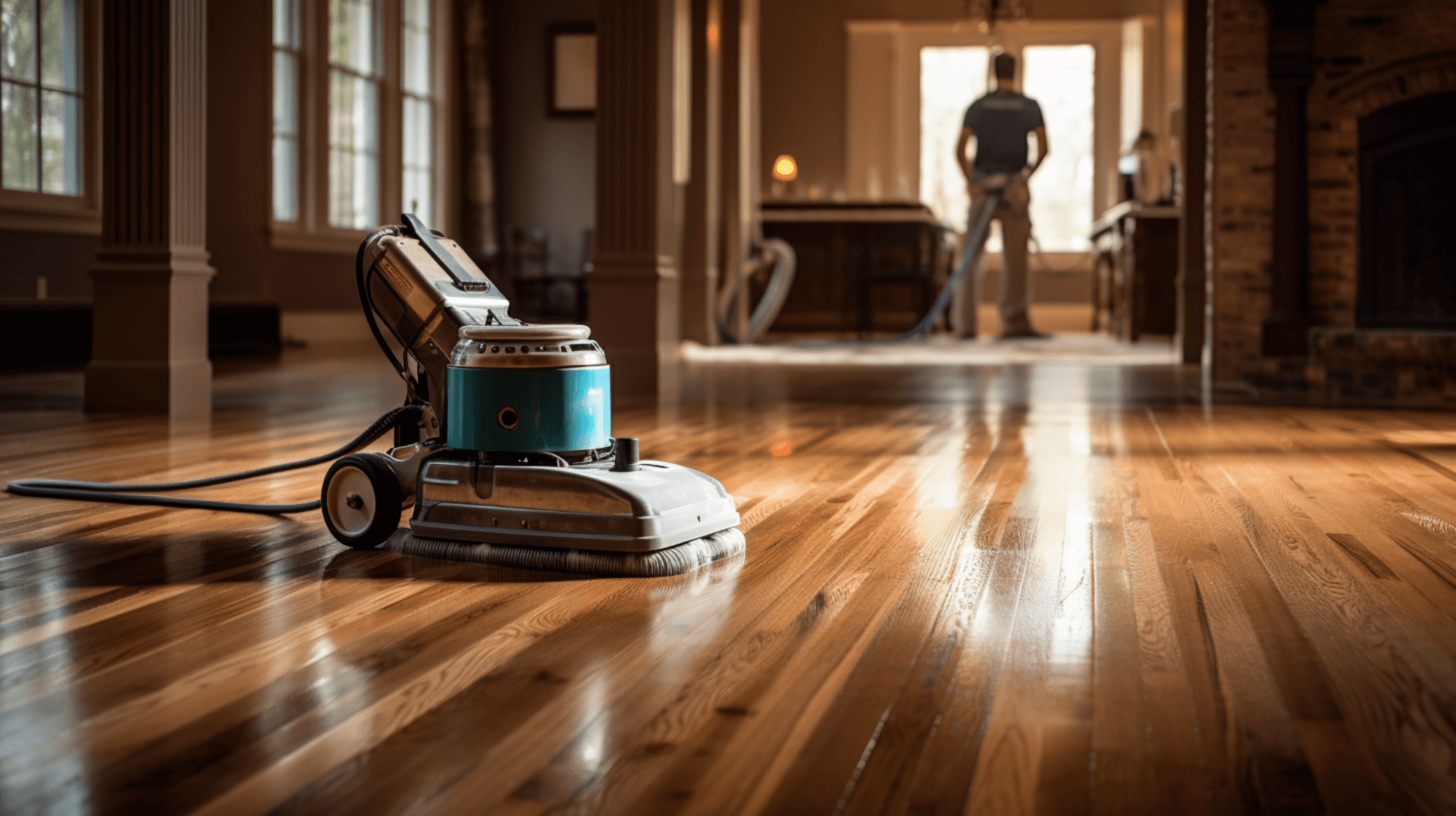
The process of professional wood floor sanding and refinishing differs for different types of wood floors. Solid hardwood floors require a more intensive sanding process compared to engineered hardwood or laminate floors. Additionally, the type of finish used on the floor will depend on the type of wood flooring.
For solid hardwood floors, the sanding process involves using professional sanding equipment, such as a drum sander or a belt sander, to remove the top layer of the wood and reveal the underlying surface. This process smooths out any imperfections, removes old finishes, and creates an even surface. After sanding, a new finish is applied to protect the floor and enhance its appearance.
Engineered hardwood and laminate floors have a thinner layer of real wood on top, so the sanding process is less intensive. These floors may require a light sanding to remove any surface imperfections and prepare the floor for a new finish.
The type of finish used will also vary depending on the type of wood flooring. Solid hardwood floors can be finished with polyurethane, oil-based finishes, or water-based finishes. Engineered hardwood and laminate floors typically have a pre-finished surface that does not require sanding or refinishing.
It is important to hire professionals like GJP Floor Sanding for this task because we have the experience, expertise, and specialized equipment to ensure the job is done correctly. We can accurately assess the condition of the floor, address any underlying issues, and provide expert advice on the best techniques and products to use. Professionals also have access to high-quality finishes that will protect the floor and enhance its aesthetic appeal.
By hiring professionals, homeowners and business owners can have peace of mind knowing that their wood floors will be properly sanded, refinished, and maintained, resulting in a beautiful and long-lasting finish.
Preparing Your Wood Floor for Sanding and Refinishing
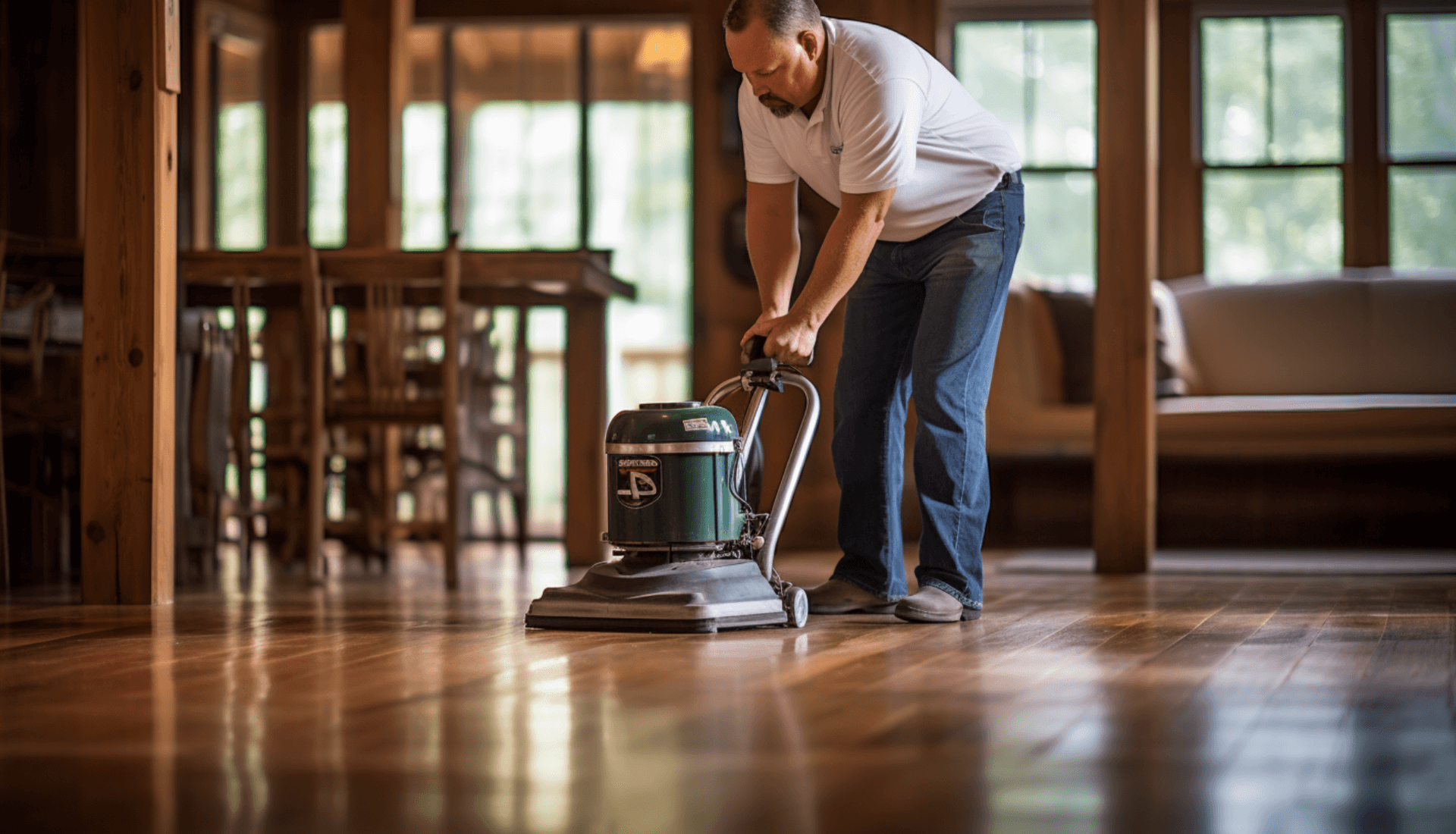
Preparing your wood floor for sanding and refinishing is crucial for a successful project and to protect your home from dust and debris. Before starting the sanding and refinishing process, it is important to inspect the floor for signs of damage, such as scratches, dents, discoloration, loose boards, gaps, and water damage. These signs indicate wear and tear, potential structural issues, and the need for sanding and refinishing.
Additionally, it is important to consider the type of wood flooring you have. Different types require different sanding and refinishing techniques. Solid hardwood floors, for example, require a more intensive sanding process compared to engineered hardwood or laminate floors. The type of finish used will also depend on the specific wood flooring.
Regular cleaning and maintenance are essential to prevent dirt and debris accumulation, which can cause damage to the floor. Leaving room for expansion, sealing gaps, and fitting insulation tightly are also important preventive measures to maintain the floor’s condition.
To protect your home from dust during the sanding process, it is important to cover furniture and other items in the room with plastic sheeting. It is also recommended to seal off the room with plastic sheeting to contain the dust. This will help minimize the spread of dust and debris throughout your home.
By properly preparing your wood floor before sanding and refinishing, you can ensure that the floor is ready for the process and minimize the impact on your home. This will help you achieve optimal results and protect your home from dust and debris.
The Impact of Climate and Environment on Wood Floor Sanding and Refinishing

The local climate and indoor environment can have a significant impact on the sanding and refinishing process of wood floors. Extreme temperatures, humidity levels, and air quality can all affect the wood flooring, making it more susceptible to damage and wear.
In hot and humid climates, wood floors can expand and contract due to the moisture in the air. This can cause gaps between the boards and can lead to warping and buckling. To prevent this, it is important to maintain a relative humidity level between 30-50% and a temperature between 60-80F year-round. This will help prevent the wood from warping or cupping due to moisture. Additionally, it is important to inspect the floor for abnormal shrinkage and swelling, and to carefully monitor all exterior doors and windows for leaks. To prevent moisture from penetrating the wood in a vapor form, it is recommended to use a dehumidifier.
In dry climates, wood floors can become dry and brittle, making them more prone to cracking and splitting. To prevent this, it is important to maintain a relative humidity level between 30-50% and a temperature between 60-80F year-round. It is also important to inspect the floor for abnormal shrinkage and swelling, and to carefully monitor all exterior doors and windows for drafts. Using a humidifier can help keep the wood flooring from drying out.
Understanding the local climate and indoor environment is important for maintaining your wood floor. By taking the necessary precautions, such as maintaining proper humidity levels and temperature, regularly inspecting the floor, and using appropriate equipment like dehumidifiers or humidifiers, homeowners and business owners can protect their wood floors and ensure the best results from the sanding and refinishing process.
The Cost of Professional Wood Floor Sanding and Refinishing
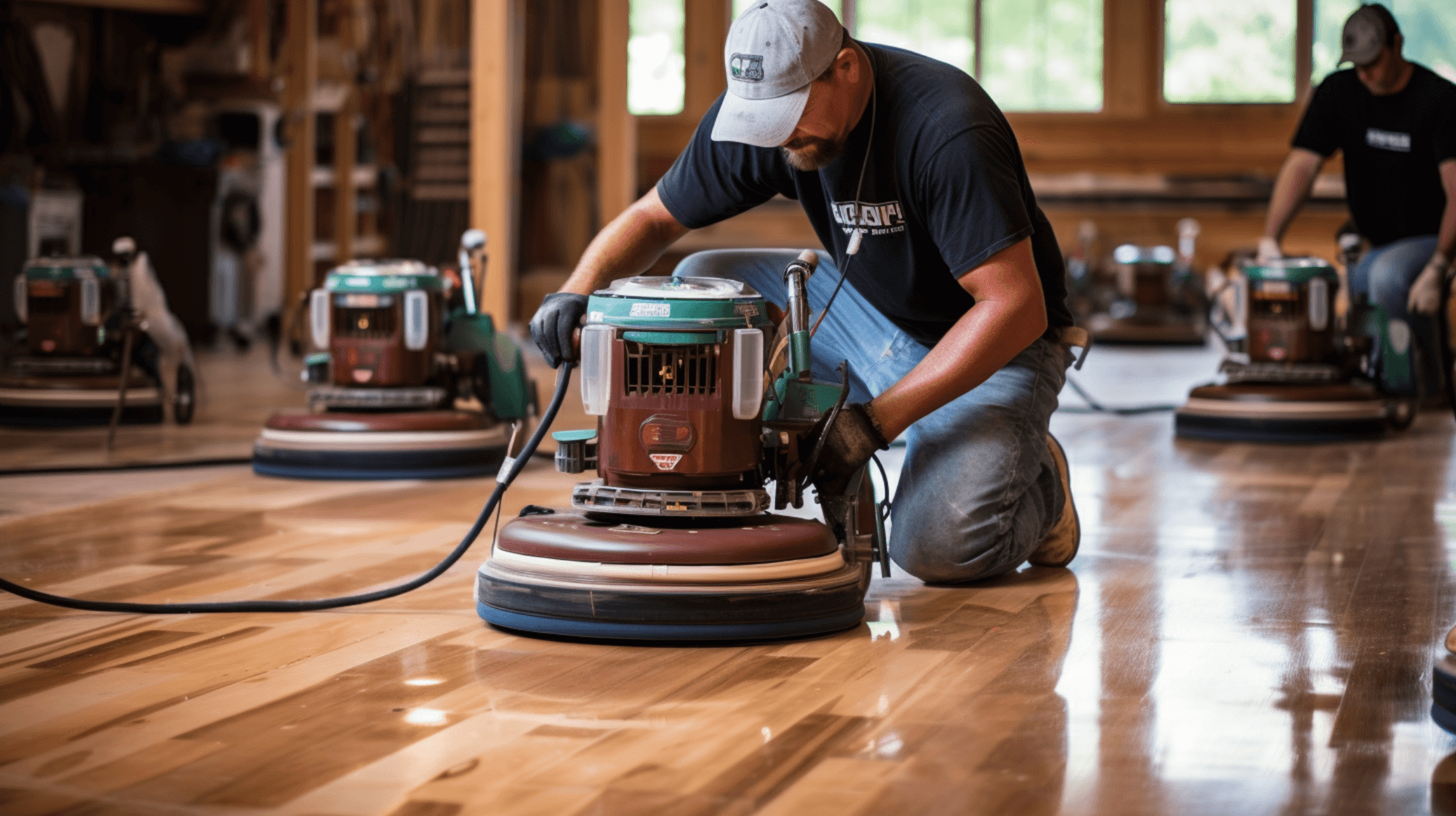
The cost of professional wood floor sanding and refinishing depends on various factors, such as the type of wood floor, the size of the area, the condition of the floor, and the type of finish used. Solid hardwood floors, for example, require a more intensive sanding process compared to engineered hardwood or laminate floors, and thus may cost more. The size of the area also affects the cost, as larger areas require more time and materials. The condition of the floor also plays a role, as any underlying issues must be addressed before sanding and refinishing. Additionally, the type of insulation used in the area can affect the cost, as some materials, such as sheep’s wool, wood fiber, glass wool, polyurethane, and polyisocyanurate, require different sanding and refinishing techniques.
The type of finish used can also influence the cost. Polyurethane, oil-based finishes, and water-based finishes are all options for solid hardwood floors, and each has its own cost. Engineered hardwood and laminate floors typically have a pre-finished surface that does not require sanding or refinishing.
Investing in professional sanding and refinishing is cost-effective in the long run. Professionals have the experience, expertise, and specialized equipment to ensure the job is done correctly. We can accurately assess the condition of the floor, address any underlying issues, and provide expert advice on the best techniques and products to use. Professionals also have access to high-quality finishes that will protect the floor and enhance its aesthetic appeal. By investing in professional services, homeowners and business owners can extend the lifespan of our wood floors, avoid costly mistakes, and enjoy the beauty and durability of our floors for many years to come.
What to Expect During and After the Sanding and Refinishing Process

During the sanding and refinishing process, homeowners and business owners should expect a thorough and detailed procedure. The process typically begins with a visual inspection of the floor to identify any existing damage, such as scratches, dents, discoloration, loose boards, gaps, and water damage. This inspection will help determine the necessary repairs and the best sanding and refinishing techniques to use. Additionally, the inspection should include assessing the condition of any steel supports in the sub-floor void, for signs of corrosion, deflection, and rotted fixings. It is also important to check for any appliances that use combustion and require ventilation, as well as any hazardous materials that may contain asbestos.
Once the inspection is complete, the sanding process begins. This involves using professional sanding equipment, such as a drum sander or a belt sander, to remove the top layer of the wood and reveal the underlying surface. This process smooths out any imperfections, removes old finishes, and creates an even surface. After sanding, a new finish is applied to protect the floor and enhance its appearance.
The sanding and refinishing process typically takes 1-3 days, depending on the size of the area and the condition of the floor. During this time, the area should be sealed off with plastic sheeting to contain the dust. It is also important to cover furniture and other items in the room with plastic sheeting to protect them from dust and debris. Additionally, special precautions should be taken with special nonskid pads that are frequently placed under area rugs, as some of these pads may imprint their pattern (surface impressions) onto the finish and/or wood floor.
Once the sanding and refinishing process is complete, the floor should be allowed to dry for at least 24 hours before it is usable. It is important to have realistic expectations about the process and results. While the process can restore the beauty of a wood floor, it cannot completely erase years of wear and tear. It is also important to note that the final result may vary depending on the condition of the floor and the type of wood flooring. By having realistic expectations, homeowners and business owners can appreciate the improvements made to their wood floors and understand the limitations of the process.
Expert Tips for Maintaining Your Newly Sanded and Refinished Wood Floor
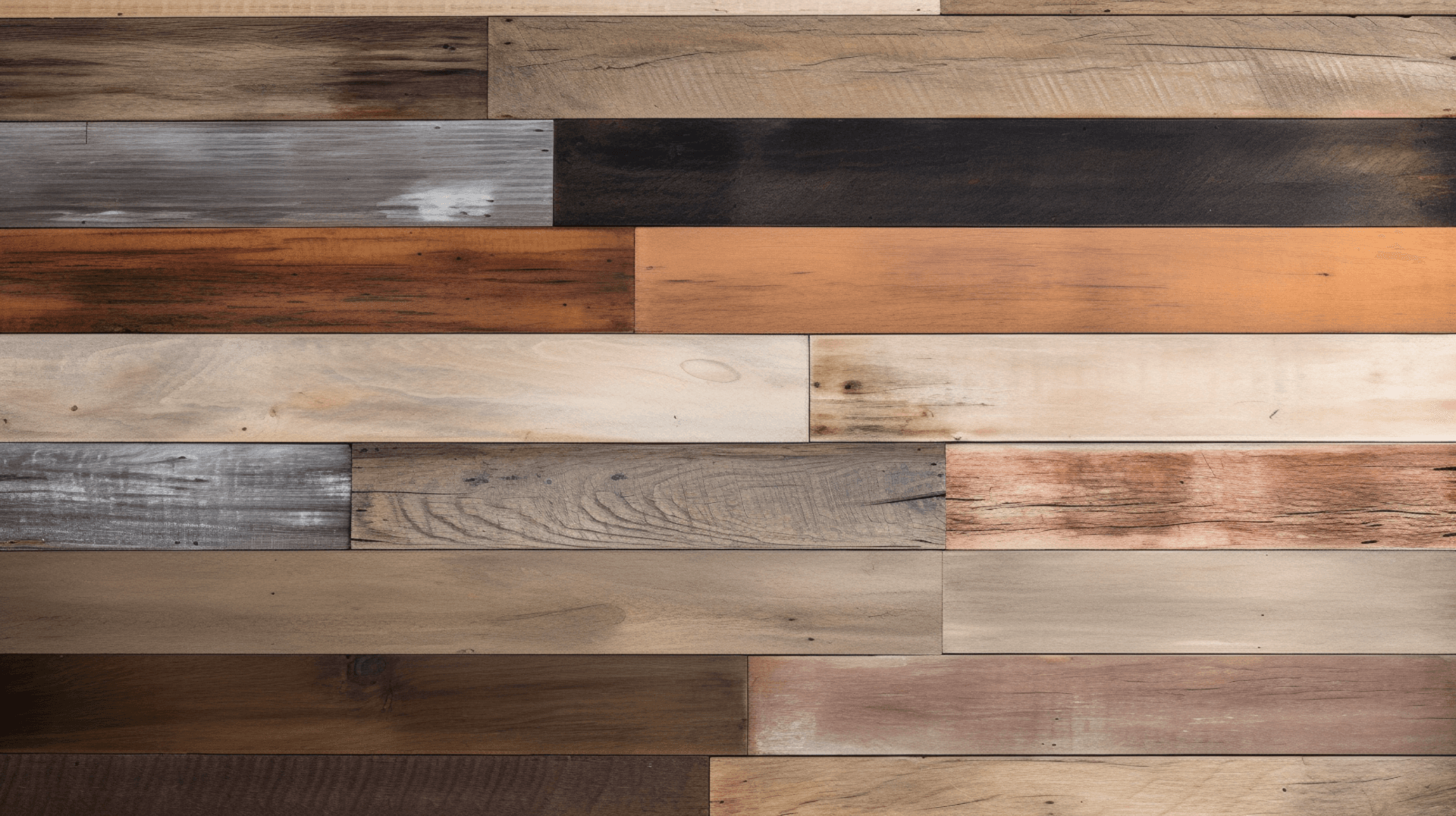
Regular cleaning and maintenance are essential for maintaining the beauty and durability of your newly sanded and refinished wood floor. Here are some expert tips to help you maintain your wood floor:
- Vacuum or sweep the floor regularly to remove dirt and debris. Use walk-off mats at all doorways to prevent dirt and debris from being tracked onto the floor.
- Wipe up spills or any other moisture on the floor immediately to prevent damage.
- Remove heel marks and scuffs using a floor finish or wood floor cleaning product approved by the manufacturer, applied with a soft cloth or dust mop.
- Avoid wax buildup under furniture and other light traffic areas by applying wax in these spots every other waxing session.
- Never use water-based cleaners on waxed floors, as they can cause water spots. For white/bleached acrylic enhanced products, always use an untreated mop and avoid water or petroleum-based products.
- When the floor loses its luster, it’s time for a maintenance coat. Follow the manufacturer’s instructions for spot-cleaning stubborn stains.
By following these expert tips and best practices, you can ensure that your newly sanded and refinished wood floor looks great and lasts for many years. Regular cleaning and maintenance, along with preventive measures like using walk-off mats and wiping up spills promptly, will help preserve the beauty and durability of your wood floor.
Contact GJP Floor Sanding for Professional Wood Floor Sanding and Refinishing

GJP Floor Sanding is the preferred choice for homeowners and business owners looking for professional wood floor sanding and refinishing services. With over 25 years of experience, GJP Floor Sanding offers a comprehensive range of services, from sanding and refinishing to repairs and maintenance. Our team of experienced professionals use the latest equipment and techniques to ensure the highest quality results.
GJP Floor Sanding is committed to providing exceptional customer service and satisfaction. We offer free consultations and quotes, and provide detailed advice on the best techniques and products to use for each project. Our team is also available to answer any questions or concerns throughout the process.
GJP Floor Sanding is dedicated to providing the highest quality services at competitive prices. We use only the best materials and finishes, and our team of experienced professionals is committed to delivering the best results. We also offer a satisfaction guarantee, so customers can be sure that our wood floor will look great and last for many years.
To get in touch with GJP Floor Sanding for a consultation or quote, simply fill out the online form on our website or give us a call. Our friendly and knowledgeable staff will be happy to answer any questions and provide a free, no-obligation quote.
